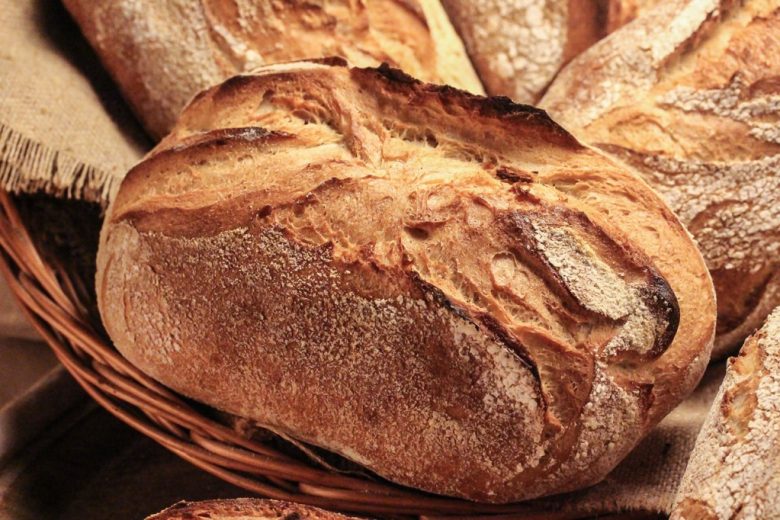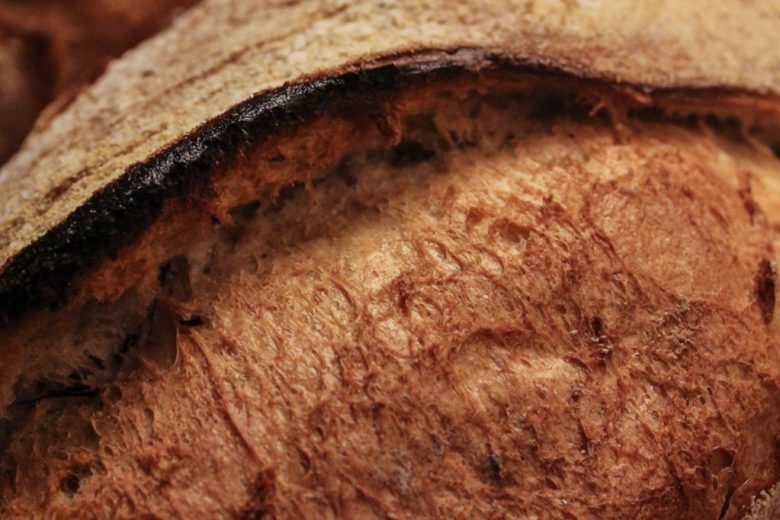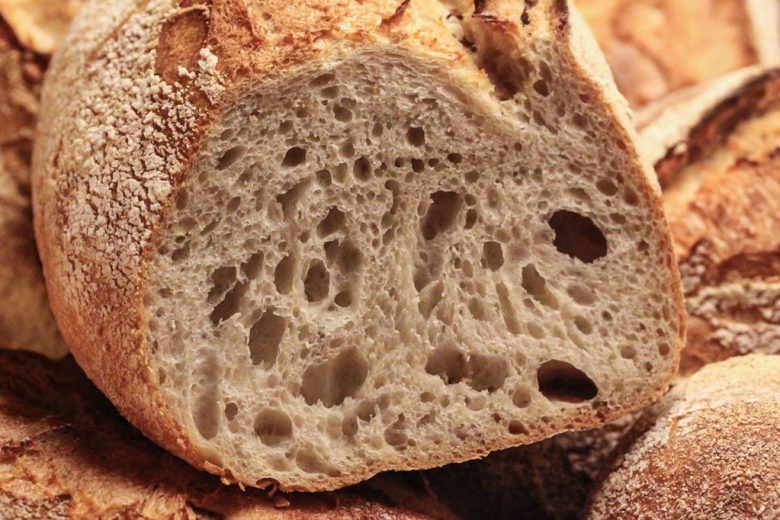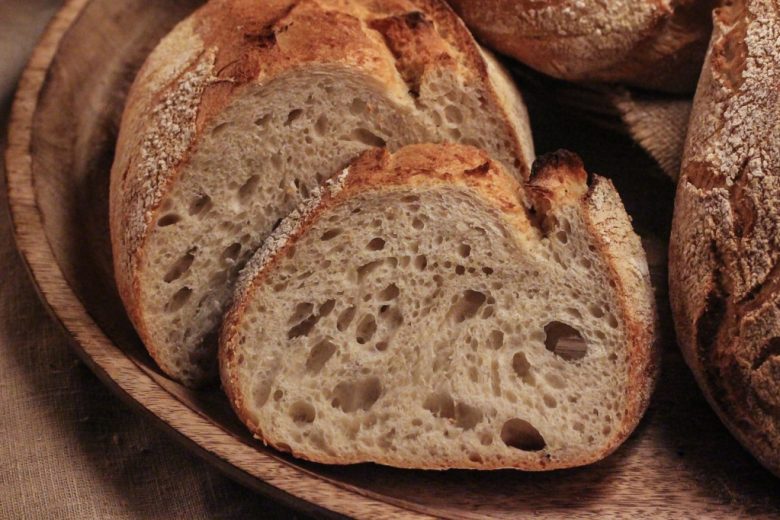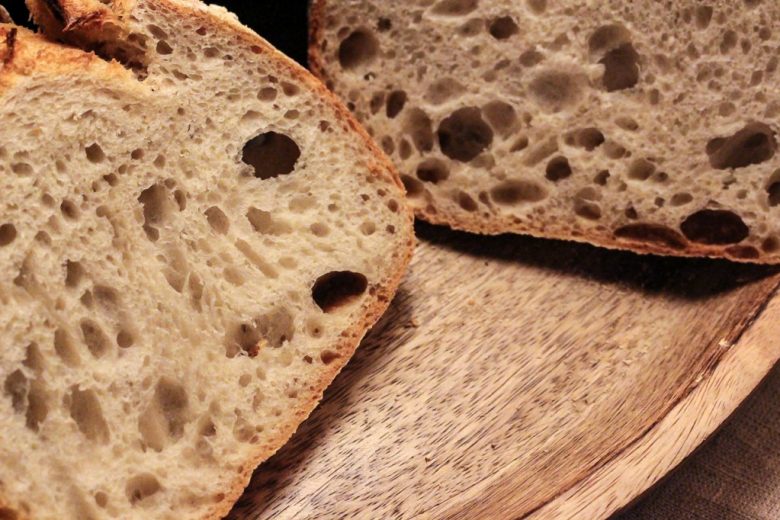Le Pain â la Semoule
“Le Pain â la Semoule” is great for beginners because it is quick and easy to prepare. The semolina allows for a high hydration and the olive oil makes the bread crumbs soft and long-lasting.
For grill partys you can enrich the dough with tomatoes, olives and spices (rosemary, oregano,…). After processing the dough is given a long and cool proof. Due to the long dough maturity it takes on more flavor and the timing is easier to control.
Since I have received questions about dough blisters, I would like to report on my experience with long dough maturation.
Things to know about “long dough maturation”
- At 5°C, the yeast activity is largely reduced and only works with 10% of its actual fermentation capacity. The enzymes continue to work actively. and thus the fermentation performance is by no means limited to the yeast, but also serves to control the enzyme activity.
- At 8-10°C it develops intense flavor compounds- this leads to an especially good taste in bread and rolls.
- The following also applies: the higher the storage temperature and the longer the ripening phase, the coarser the pores of the crumb (stronger yeast fermentation). Because more sugar is released from the starch, the crust takes on a stronger and more beautiful coloration.
- So called “sugar blisters” – also called protein sprinkles –occur with high-enzyme flours and at high dough storage temperatures (+ 7°C in the main storage phase). If wheat sourdough is also used, the probability of their occurrence increases again. Condensation on the surface of the dough also seems to promote their formation.
- The problem of leathery crust skin after baking can be avoided by storage below 5 ° C.
- Maintaining optimal humidity and air movement is very important! Excessive air movement in the cooling system causes the surface of the dough to dry out – the result is a small volume and a dull crust. Overly moist doughs also lead to baking defects such as a misshapen form and a flatten shape.
- The rule is: the higher amount of enzyme flour, the lower the storage temperature! Storage temperatures around 0 ° C are preferable for strong enzyme flours. Low-enzyme flours are good for retarding fermentation (-8°C) and thus achieve a more intense flavor.
Recipe
For a dough weight of 880g/ 2 pieces, each 440g of dough:
Wheat sourdough:
- 50g Wheat flour T65
- 50g Water
- 5g Starter
DT: 28°C Hydration(TA): 200 Maturation time: 18 hours
Poolish:
- 100g Wheat flour T65
- 100g Semolina (fine) or durum wheat
- 200g Water
- 1g Yeast
DT: 25°C reduced to 4°C Hydration(TA): 200 Maturation time: 18-24 hours
Main dough:
- 105g Mature wheat sourdough
- 401g Mature poolish
- 250g T-65
- 80g Water
- 12g Sea salt
- 30g Olive oil (mix in at the end of the mixing time)
- 2g Yeast
Mixing time: 8 min. slow/ 3-4 minutes fast DT: 25-27°C
- Mix the wheat sourdough, poolish, wheat flour, and water on slow speed for 3 minutes.
- Allow to autolyze for 30 minutes.
- After the autolyze, the salt and yeast are added to the dough and mix on slow speed for 8 minutes.
- Slowly mix in the olive oil and knead on fast speed until the dough releases from the side of the bowl.
- After kneading, store the dough in an oiled tub and fold after 20/40 minutes.
- Now the dough is divided into 2 equal-sized pieces.
- Each piece is now loosely folded into shape and placed in a proofing basket with the seam-side down.
- The shaped doughs now proof at 4-6°C in the refrigerator for 8-12 hours.
- Slide the bread into the oven at 250°C with strong steam and after 10 minutes reduce the temperature to 210°C. Bake the bread for 35 minutes (release the steam toward the end of the baking time).



